- filed under: Recommended Crops, Seasonal Outdoor Learning
Flanders Field Poppies Project: A Meaningful Way to Remember
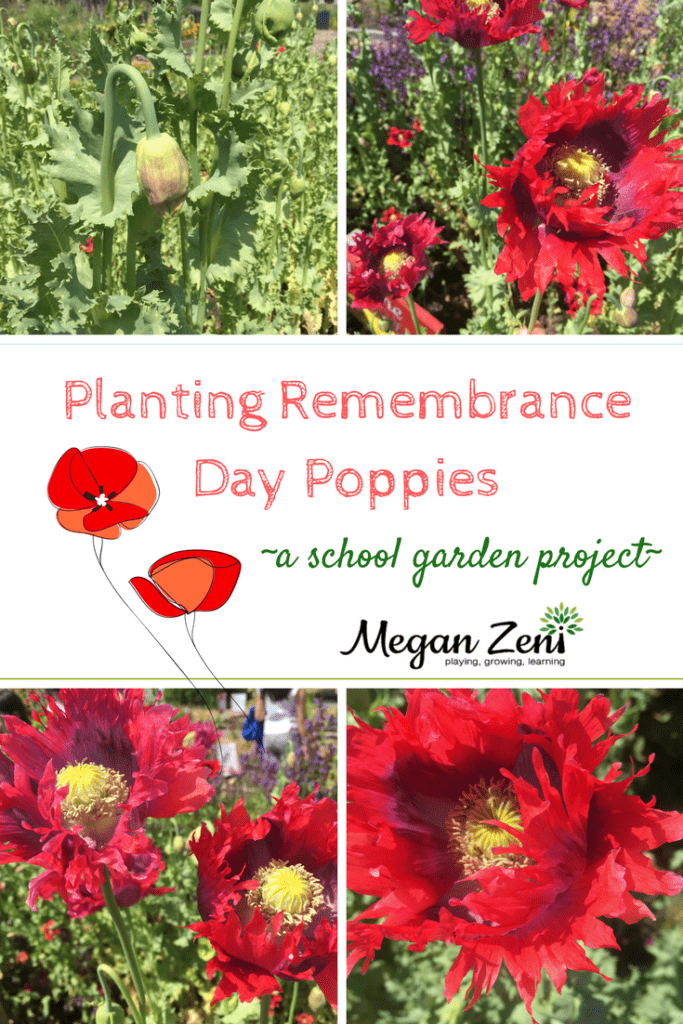
Flanders Field Poppies
Remembrance Day can be an abstract and complicated topic for small children. Where we live, and across most of the commonwealth, Remembrance Day is a solemn and serious occasion that is symbolized by the wearing of Flanders Field poppies. John McCrae, a Canadian field surgeon, wrote his now famous poem in May of 1915 while in the midst of the battle of Ypres in Belgium during WWI.
How to Plant Poppies
Remembrance Day occurs on November 11th, which coincides with the timing of when Flanders Field Poppies like to be strewn out into the soil.
Poppies do not like to be transplanted so just go ahead and toss them onto any soil that receives full sun around Remembrance Day in November. By early summer, which coincides with the writing of the poem, you’ll have a gorgeous display of blooms that the children can observe, reflect on and write poetry about.

Caring for Poppies
Flanders Field Poppies require very little care while they are growing. They are quite drought tolerant, so are perfect for the edges of your pollinator gardens, or hard to reach corners of the garden.
By late summer, once the flowers have died off, leave the seed heads to dry so you can collect the seeds. The dry seed heads add interest your Fall garden and make for a wonderful opportunity to collect seeds once school is back in session in September!
Seed Saving Poppies
Poppies are quite possibly the easiest seeds to save!
Simply tip over the seed head and the seeds will come spilling out. Have a cardboard box or other vessel for capturing the seeds, or make your peace with an abundance of self-seeded poppies throughout your garden next season! Once you have harvested the seeds, go ahead and pull out the remainder of the plant stalks and roots and add to your composter.
The seeds are edible and used in a huge variety of baked goods, dressings and sauces. The petals of this particular poppy are reported to be edible, but I do not allow children to eat them since so many other varieties of poppy petals and seed pods can be poisonous or a source of serious pharmacology.
Instead of eating any of the poppy seeds, we save them for use in seed bombs or for donating to other schools. To save the seeds, simply label a paper coin envelope and keep in a cool, dry location.
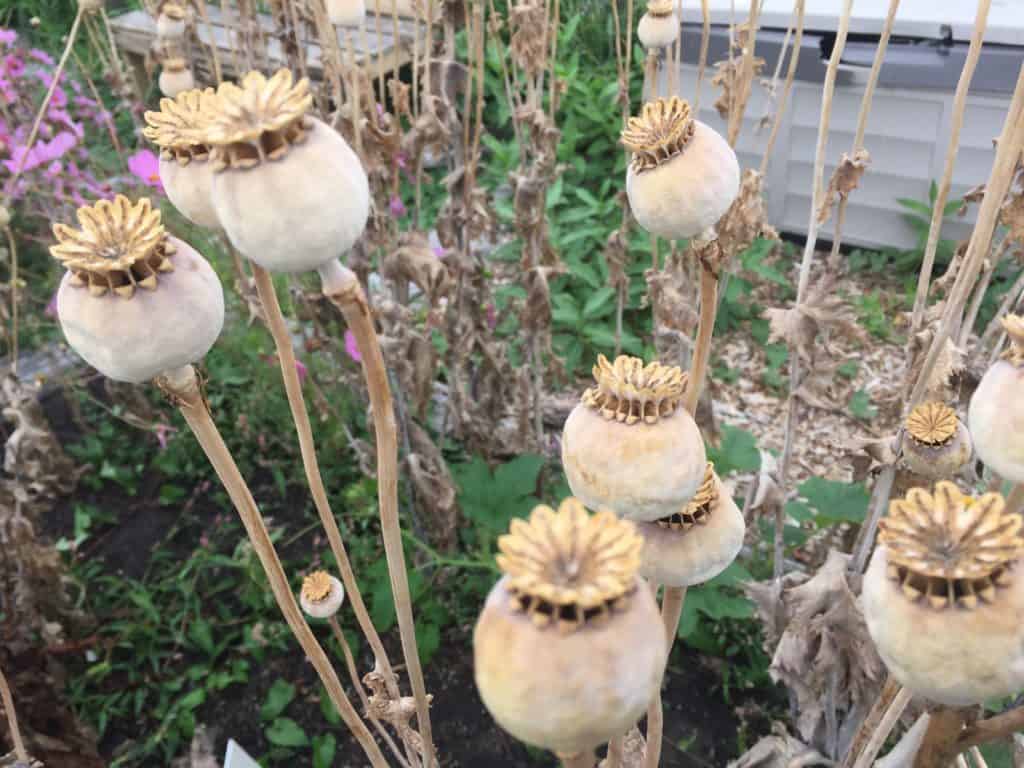
Great Books About Remembrance Day
There are many books available to read aloud and have available to children who wish to learn more about the historical events we remember on November 11th. Links on Book titles will take you to Amazon.ca.
Proud As A Peacock, Brave As A Lion
In Flanders Fields: The Story Of The Poem
In Flanders Fields
by John McCrae
In Flanders fields the poppies blow Between the crosses, row on row, That mark our place; and in the sky The larks, still bravely singing, fly Scarce heard amid the guns below. We are the Dead. Short days ago We lived, felt dawn, saw sunset glow, Loved, and were loved, and now we lie In Flanders Fields. Take up our quarrel with the foe: To you from failing hands we throw The torch; be yours to hold it high. If ye break faith with us who die We shall not sleep, though poppies grow In Flanders Fields.
Remembrance Day Craft
If you want to follow up the planting of your seeds with a craft, here is one that my students have enjoyed over the years. First we used a watered down tempura paint to completely cover card stock. We used plastic wrap to “smoosh” the paint and then cut out varying colours and textures of red fabric remnants, tissue paper and other odds and ends from the craft supplies. The stems were drawn in with glue and covered with green glitter. The centres of the poppy were made with Plasticine.

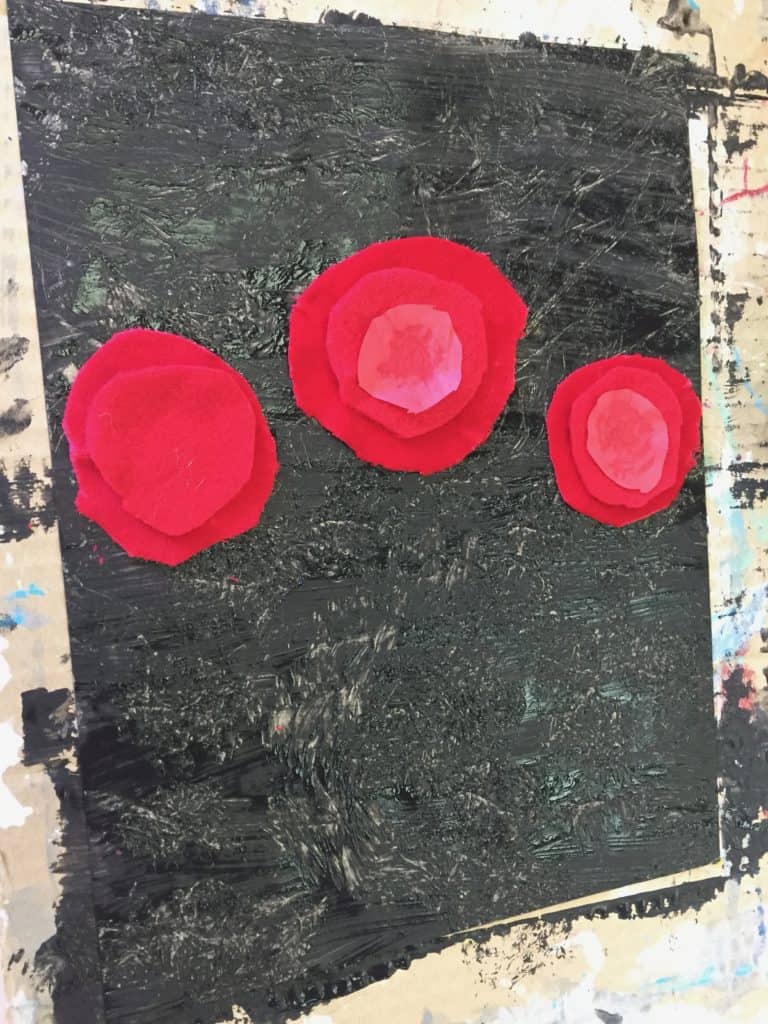
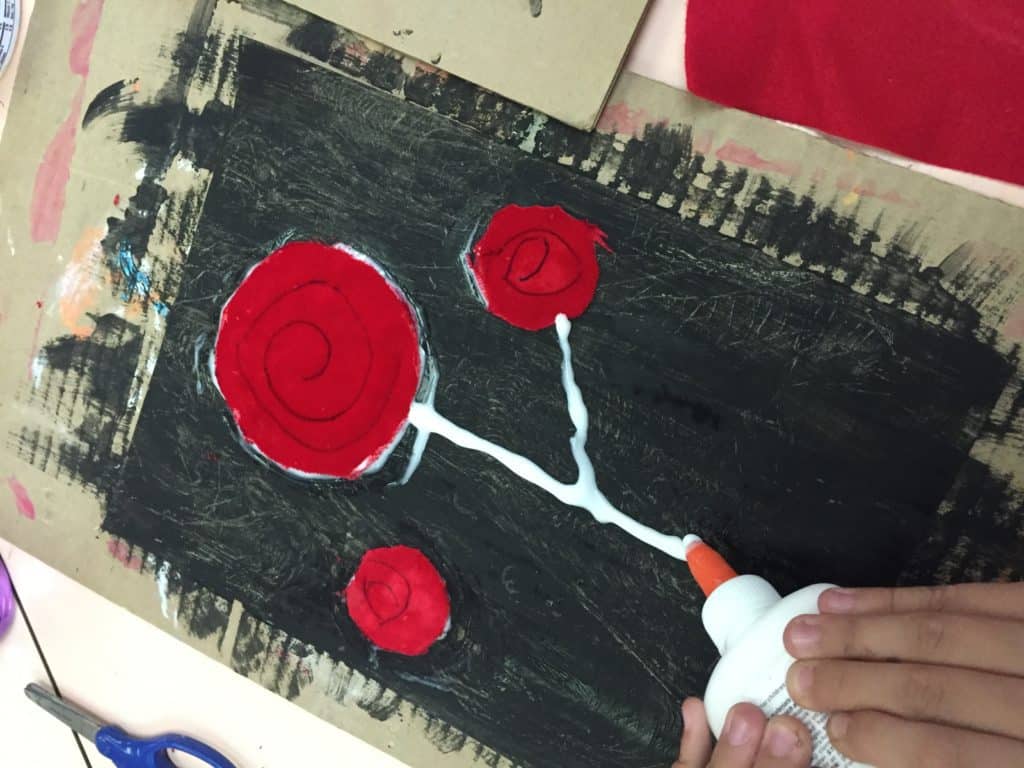
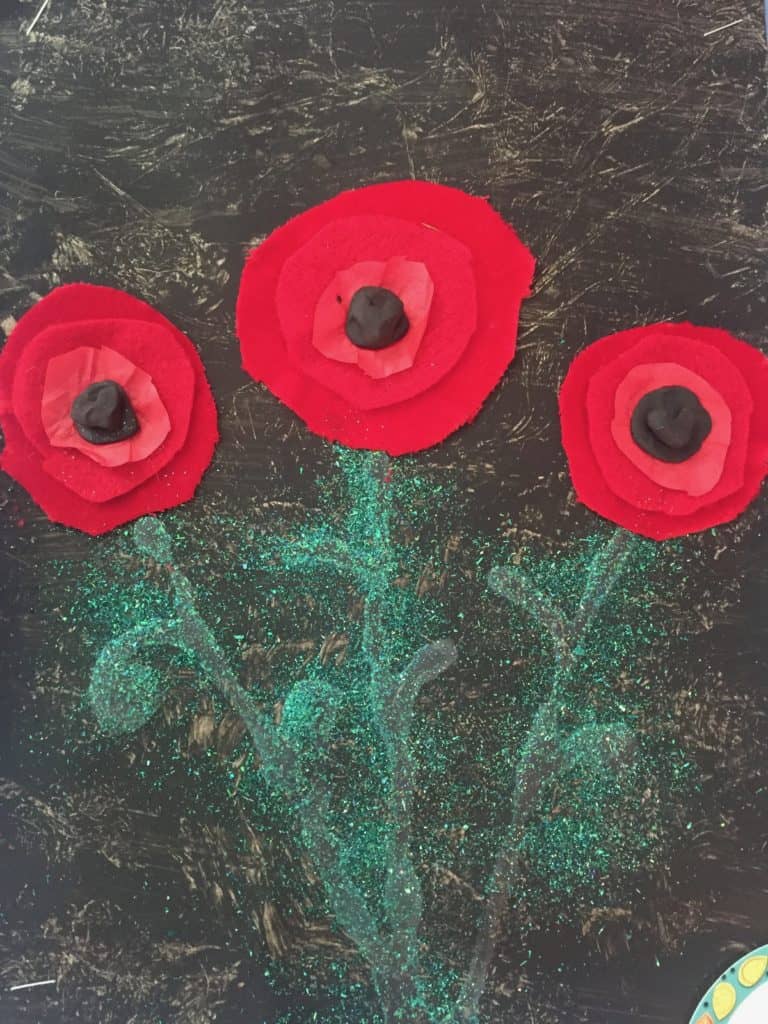
Gardening With Kids
If you are looking for more ideas for learning in your garden classroom, such as how seeds travel or or this seed mandala art project check out my Pinterest boards! Or sign up for my newsletter for timely and seasonal gardening ideas!
